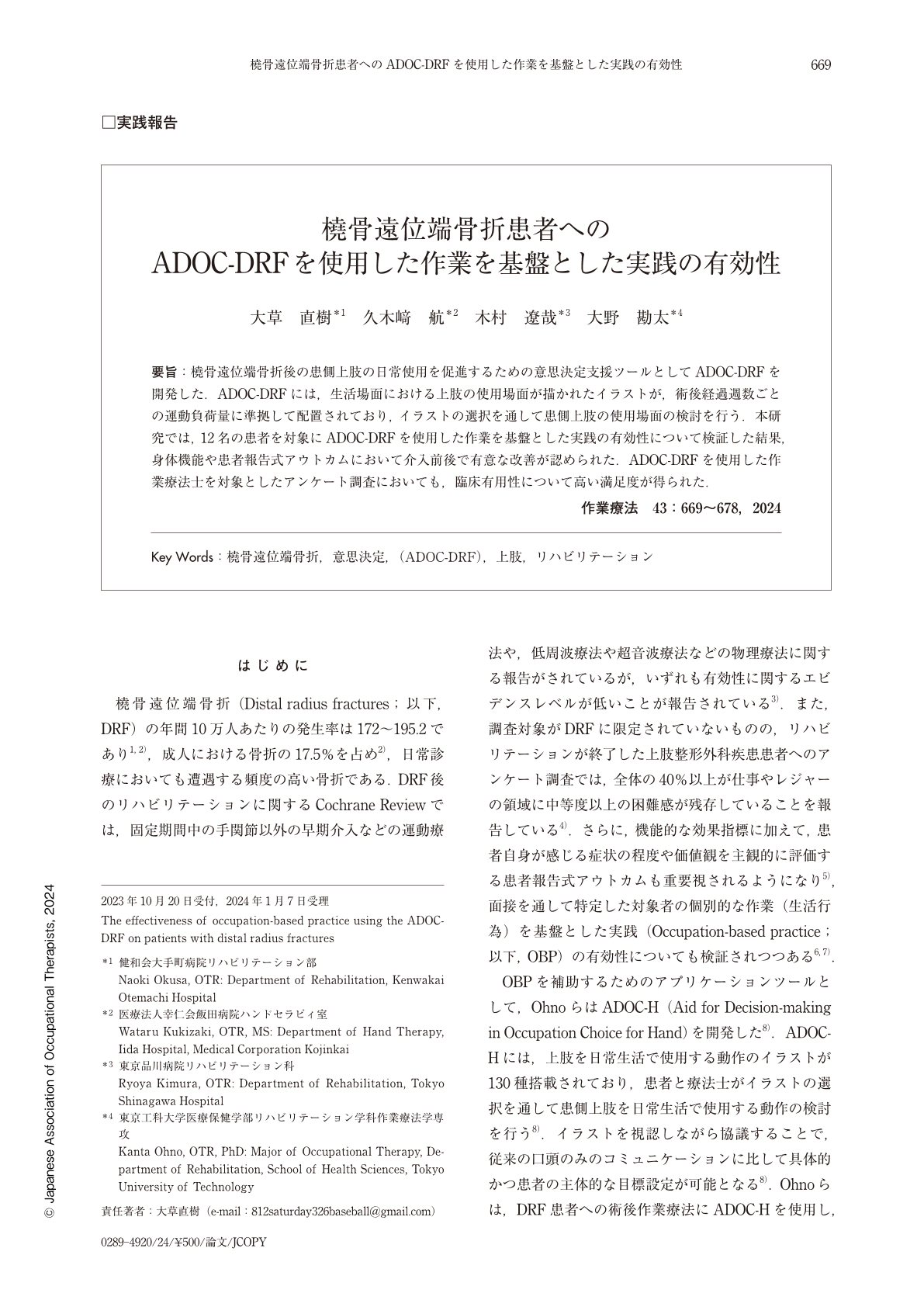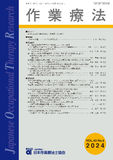Japanese
English
- 販売していません
- Abstract 文献概要
- 1ページ目 Look Inside
- 参考文献 Reference
要旨:橈骨遠位端骨折後の患側上肢の日常使用を促進するための意思決定支援ツールとしてADOC-DRFを開発した.ADOC-DRFには,生活場面における上肢の使用場面が描かれたイラストが,術後経過週数ごとの運動負荷量に準拠して配置されており,イラストの選択を通して患側上肢の使用場面の検討を行う.本研究では,12名の患者を対象にADOC-DRFを使用した作業を基盤とした実践の有効性について検証した結果,身体機能や患者報告式アウトカムにおいて介入前後で有意な改善が認められた.ADOC-DRFを使用した作業療法士を対象としたアンケート調査においても,臨床有用性について高い満足度が得られた.
Objectives: This study aimed to develop and evaluate the effectiveness of the Aid for Decision-making in Occupation Choice for Distal Radius Fracture (ADOC-DRF) as a decision aid to facilitate the daily use of the injured hand after distal radius fractures. ADOC-DRF employs illustrations depicting upper limb usage scenarios arranged by postoperative weeks and exercise loads, allowing for consideration of appropriate limb usage through illustration selection. Methods: Twelve patients participated in occupational therapy sessions utilizing the ADOC-DRF. Changes in physical function and patient-centric outcomes were assessed pre-and post-intervention, respectively. Additionally, a survey of occupational therapists using the ADOC-DRF was conducted to evaluate clinical utility and satisfaction. Results: After the intervention, significant improvements were observed in physical function and patient-centric outcomes. Occupational therapists expressed high satisfaction with the clinical utility of ADOC-DRF. Discussion: The positive outcomes suggest that ADOC-DRF effectively supports decision-making for promoting the daily use of the affected upper limb after distal radius fracture. A tailored approach, utilizing illustrations and exercise progression, contributes to enhanced patient outcomes. Conclusion: ADOC-DRF marks a promising advance in aiding distal radius fracture recovery. Its positive impact on patient outcomes and therapist satisfaction highlights its potential as a valuable rehabilitation tool in this population.

Copyright © 2024, Japanese Association of Occupational Therapists. All rights reserved.


